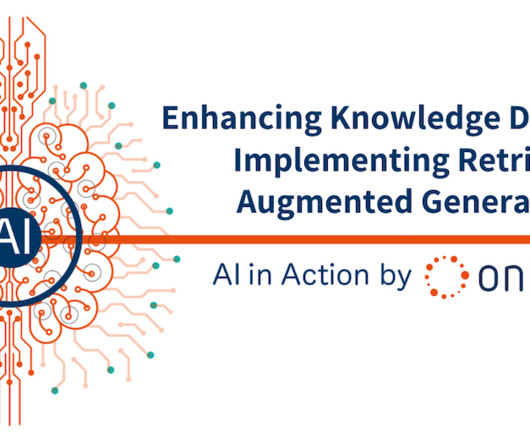Enhancing Knowledge Discovery: Implementing Retrieval Augmented Generation with Ontotext Technologies
Ontotext
FEBRUARY 21, 2024
RAG and Ontotext offerings: a perfect synergy RAG is an approach for enhancing an existing large language model (LLM) with external information provided as part of the input prompt, or grounding context. So we have built a dataset using schema.org to model and structure this content into a knowledge graph.



















Let's personalize your content